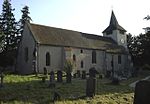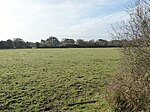MERLIN reactor
AldermastonAssociated Electrical IndustriesBerkshire building and structure stubsNuclear power stubsNuclear research institutes in the United Kingdom ... and 3 more
Nuclear research reactorsNuclear technology in the United KingdomResearch institutes in Berkshire
MERLIN reactor was a 10MWt pool-type research reactor at Aldermaston Court, Aldermaston, Berkshire, England which operated from 6 November 1959 until 1962. It was privately owned and operated by Associated Electrical Industries. It was opened by Prince Philip on 6 November 1959. The head of the reactor was Alan James Salmon, then aged 36 who had worked for AEI since leaving the RAF and had spent two years at the Atomic Energy Research Establishment studying reactor design before joining AEI Aldermaston.
Excerpt from the Wikipedia article MERLIN reactor (License: CC BY-SA 3.0, Authors).MERLIN reactor
Red Lane,
Geographical coordinates (GPS) Address Nearby Places Show on map
Geographical coordinates (GPS)
| Latitude | Longitude |
|---|---|
| N 51.38 ° | E -1.1461 ° |
Address
Aldermaston Park
Red Lane
RG7 4PB
England, United Kingdom
Open on Google Maps








